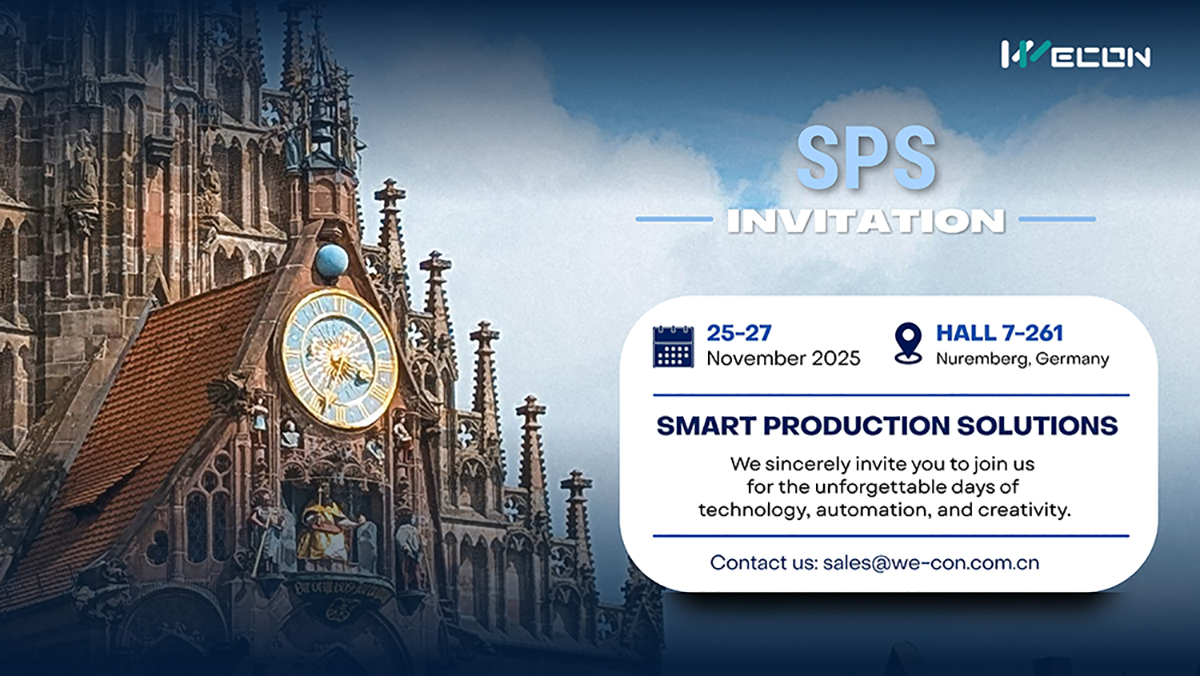Hide last authors
| author | version | line-number | content |
|---|---|---|---|
| |
1.1 | 1 | = TwinCAT_PLC_Ethernet = |
| 2 | |||
| 3 | Supported series: Twincat | ||
| 4 | |||
| 5 | (% style="text-align:center" %) | ||
| 6 | [[image:RVUyBW3DPV.png]] | ||
| 7 | |||
| 8 | **PLC Settings** | ||
| 9 | |||
| 10 | Choose Target System→ Search→ Broadcast Search→ choose PLC → Add router→ choose CPU → OK | ||
| 11 | |||
| 12 | (% style="text-align:center" %) | ||
| 13 | [[image:lTAhpgCBWJ.png]] | ||
| 14 | |||
| 15 | Route Settings→Add Route Dialog→ Broadcast Search→ choose PLC→ modify Route Name as HMI name → modify AmsNetId as HMI AmsNetId: 192.168.50.154.1.1 **(HMI IP + .1.1) **→ select the option of IP Address→ set HMI IP in Address info→ Add Route | ||
| 16 | |||
| 17 | (% style="text-align:center" %) | ||
| 18 | [[image:gfF9dtMLW7.png]] | ||
| 19 | |||
| 20 | Actions→ Activate configuration | ||
| 21 | |||
| 22 | (% style="text-align:center" %) | ||
| 23 | [[image:0bvTefCtCv.png]] | ||
| 24 | |||
| 25 | (% id="cke_bm_680S" style="display:none" %)** **(%%)**HMI Settings** | ||
| 26 | |||
| 27 | |**Item**|**Settings**|**Note** | ||
| 28 | |Protocol|TwinCAT_PLC_Ethernet| | ||
| 29 | |Connection|Ethernet| | ||
| 30 | |Port NO.|48898| | ||
| 31 | |ADS port|801/811/821/831| | ||
| 32 | |PLC station No.|1 | ||
| 33 | |||
| 34 | Choose protocol: TwinCAT_PLC_Ethernet | ||
| 35 | |||
| 36 | (% style="text-align:center" %) | ||
| 37 | [[image:0rPAMOoxzH.png]] | ||
| 38 | |||
| 39 | Setting→PLC IP Address→AMS NetId (Fill in according to the actual AMS NetId search by PLC) | ||
| 40 | |||
| 41 | **How to import the tags** | ||
| 42 | |||
| 43 | **TwinCat 2:** | ||
| 44 | |||
| 45 | Open TwinCAT PLC Control→ edit program→ save the program in a file → Project → Rebuild all | ||
| 46 | |||
| 47 | (% style="text-align:center" %) | ||
| 48 | [[image:f925vKrK47.png]] | ||
| 49 | |||
| 50 | (% style="text-align:center" %) | ||
| 51 | [[image:FITLTJJfLP.png]] | ||
| 52 | |||
| 53 | (% class="box infomessage" %) | ||
| 54 | ((( | ||
| 55 | Note: After "Rebuild all", there will be a file whose format is "tpy". | ||
| 56 | ))) | ||
| 57 | |||
| 58 | **TwinCat 3:** | ||
| 59 | |||
| 60 | ~1. In the TwinCat 3, the settings tab of PLC project, select the TPY File option. | ||
| 61 | |||
| 62 | (% style="text-align:center" %) | ||
| 63 | [[image:PvVEXT2lyv.png]] | ||
| 64 | |||
| 65 | 2. Activation configuration | ||
| 66 | |||
| 67 | (% style="text-align:center" %) | ||
| 68 | [[image:OxqjpdmNDx.png]] | ||
| 69 | |||
| 70 | 3.Open the project folder to find the *.tpy file | ||
| 71 | |||
| 72 | (% style="text-align:center" %) | ||
| 73 | [[image:h5DzS2ZRIk.png]] | ||
| 74 | |||
| 75 | PIStudio Settings | ||
| 76 | |||
| 77 | Labels mange→ Import Tag From File→ choose the file whose format is "tpy" in the file →Save | ||
| 78 | |||
| 79 | (% style="text-align:center" %) | ||
| 80 | [[image:qaOxmsAR2S.png]] | ||
| 81 | |||
| 82 | |||
| 83 | **Support Variable Type** | ||
| 84 | |||
| 85 | |=Data Type|=PIStudio Data Format|=Range | ||
| 86 | |=BOOL|Bit|0~~1 | ||
| 87 | |=BYTE|16-bit Unsigned/Binary/BCD/Hex|0~~255 | ||
| 88 | |=WORD|16-bit Unsigned/Binary/BCD/Hex|0~~65535 | ||
| 89 | |=DWORD|32-bit Unsigned/Binary/BCD/Hex |0~~4294967295 | ||
| 90 | |=SINT|16-bit Signed/Binary/BCD/Hex|-128~~127 | ||
| 91 | |=USINT|16-bit Unsigned/Binary/BCD/Hex|0~~255 | ||
| 92 | |=INT|16-bit Signed/Binary/BCD/Hex|-32768~~32767 | ||
| 93 | |=UINT|16-bit Unsigned/Binary/BCD/Hex|0~~65535 | ||
| 94 | |=DINT|32-bit Signed/Binary/BCD/Hex|-2147483648~~2147483647 | ||
| 95 | |=UDINT|32-bit Unsigned/Binary/BCD/Hex|0~~4294967295 | ||
| 96 | |=REAL|32-bit Floating|1.00E-44~~3.40E+38 | ||
| 97 | |=LREAL|64-bit Floating|4.94065645841247e-324~~1.7976931348623157e+308 | ||
| 98 | |=STRING|STRING| |

